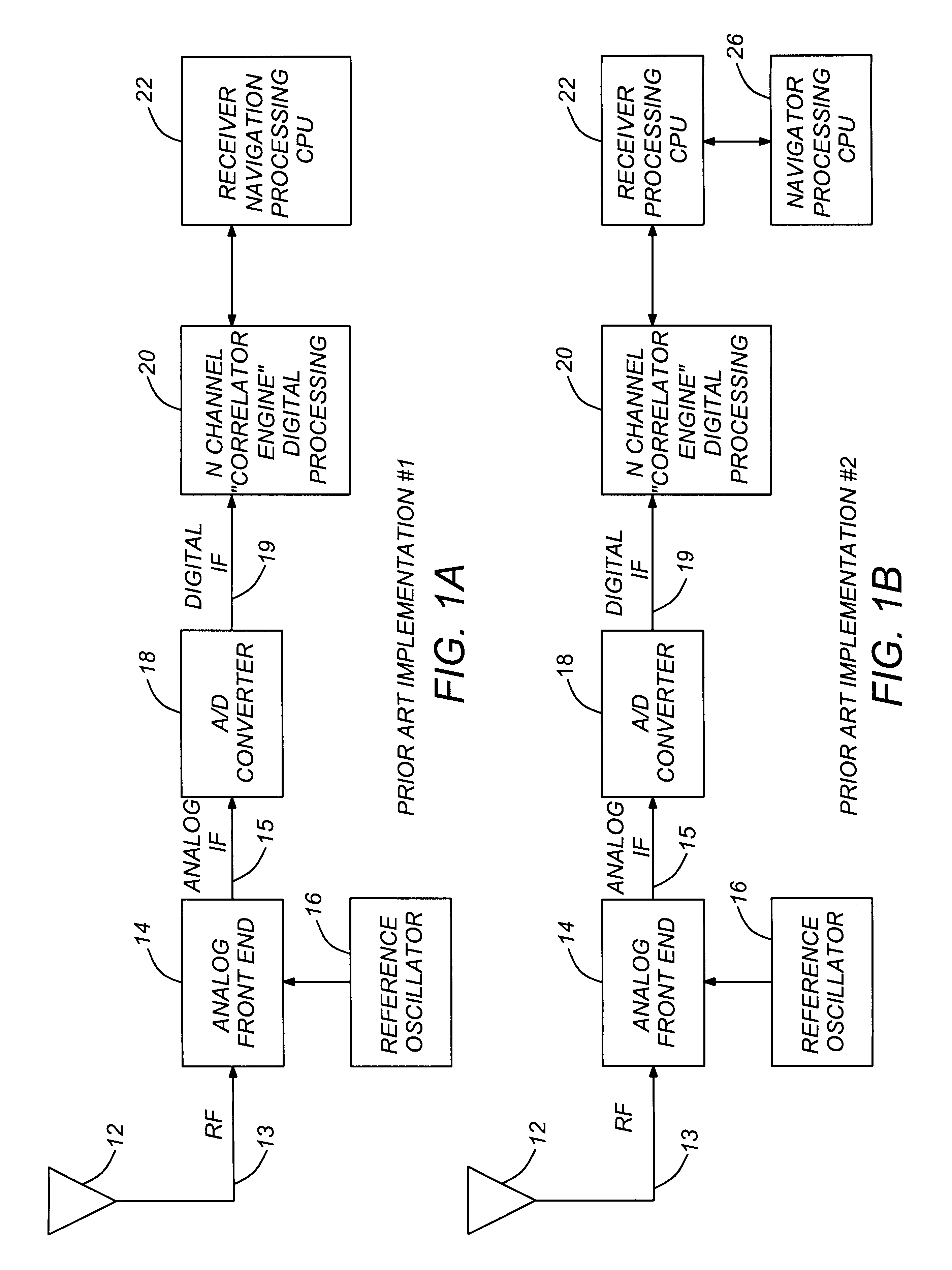Autonomous hardwired tracking loop coprocessor for GPS and WAAS receiver
a technology of gps and receivers, applied in the field of automatic hardwired tracking loop coprocessors for gps and waas receivers, can solve the problems of increasing the cost and silicon, the cpu 22 of the receiver is overly burdened with the still intensive processing requirements, and the need for a more powerful cpu (with increased power consumption) to be used, so as to minimize the cost and real estate, reduce the cost, and minimize the effect of power consumption
- Summary
- Abstract
- Description
- Claims
- Application Information
AI Technical Summary
Benefits of technology
Problems solved by technology
Method used
Image
Examples
Embodiment Construction
STRUCTRAL INPLEMENTATION
FIG. 2 illustrates an autonomous advanced digital signal processing chip ("HWTL chip") 100 provided in accordance with the principles of this invention. The term "HWTL chip" may also be referred to herein interchangeably with "HWTL ASIC" or "HWTL integrated circuit") HWTL chip 100 comprises in the preferred embodiment a digital Correlator Engine ("Correlator") 20, a CPU 26, and a HWTL coprocessor 28 operating under the direction of the on-board CPU 26. Correlator Engine 20 receives an IF signal 19 and performs GPS signal processing including, such as: C / A code capture, Doppler rotation, correlation with a replica C / A code, coherent & noncoherent integration and an 8 bin frequency correlation. Table 2 illustrates one functional objective of the HWTL chip 100 provided in accordance with the principles of this invention
FIG. 3 illustrates the HWTL functional signal flow. Data is passed both directly and indirectly between navigation processing CPU 26, HWTL coproc...
PUM
 Login to View More
Login to View More Abstract
Description
Claims
Application Information
 Login to View More
Login to View More - R&D
- Intellectual Property
- Life Sciences
- Materials
- Tech Scout
- Unparalleled Data Quality
- Higher Quality Content
- 60% Fewer Hallucinations
Browse by: Latest US Patents, China's latest patents, Technical Efficacy Thesaurus, Application Domain, Technology Topic, Popular Technical Reports.
© 2025 PatSnap. All rights reserved.Legal|Privacy policy|Modern Slavery Act Transparency Statement|Sitemap|About US| Contact US: help@patsnap.com



